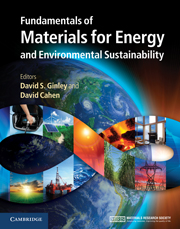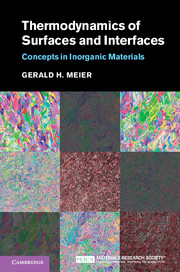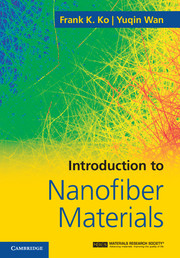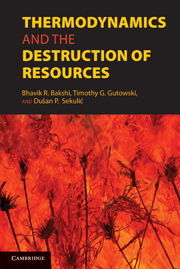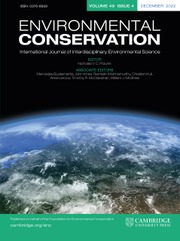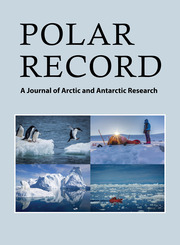Fundamentals of Materials for Energy and Environmental Sustainability
How will we meet rising energy demands? What are our options? Are there viable long-term solutions for the future? Learn the fundamental physical, chemical and materials science at the heart of renewable/non-renewable energy sources, future transportation systems, energy efficiency and energy storage. Whether you are a student taking an energy course or a newcomer to the field, this textbook will help you understand critical relationships between the environment, energy and sustainability. Leading experts provide comprehensive coverage of each topic, bringing together diverse subject matter by integrating theory with engaging insights. Each chapter includes helpful features to aid understanding, including a historical overview to provide context, suggested further reading and questions for discussion. Every subject is beautifully illustrated and brought to life with full color images and color-coded sections for easy browsing, making this a complete educational package. Fundamentals of Materials for Energy and Environmental Sustainability will enable today's scientists and educate future generations.
- Provides engaging insights into the full range of energy options currently open to us
- Covers the fundamental chemical, physical and materials science of, as well as the critical relationships between, the environment, energy and sustainability
- Includes helpful features to aid understanding, including a historical overview to provide context, references for further reading, and questions for discussion
Reviews & endorsements
'This book represents one of the most integrated texts on the topics of materials for energy and environmental sustainability. Written by leading experts, it represents the most comprehensive review of the state of the art for students, educators, scientists, economists, and policy makers interested in understanding the options provided by advanced materials for solving the global energy problems. [This] book helps integrate the diverse disciplines that will be needed to solve the very complex challenges.' JOM (Journal of the Minerals, Metals and Materials Society)
'[This book] is a good example of simplicity, completeness and scientific rigor … [It] should be considered as a textbook in courses dedicated to renewable energies, as well as being a very good starting point as a complete and updated reference source for anyone involved in this field.' A. Terrasi, Università di Catania, Italy
'Devotes … attention to the assessment of the many fundamental basic materials challenges that still exist … This text does an excellent job mapping out the many pathways that are currently under exploration.' Science
Product details
February 2012Hardback
9781107000230
772 pages
287 × 223 × 29 mm
1.83kg
450 colour illus. 80 tables
Available
Table of Contents
- List of contributors
- Preface
- Acknowledgments
- Part I. Energy and the Environment: The Global Landscape:
- 1. A primer on climate change
- 2. The global energy landscape and energy security
- 3. Sustainability and energy conversions
- 4. Energy cost of materials: materials for thin-film photovoltaics as an example
- 5. Economics of materials
- 6. Global energy flows
- 7. Global materials flows
- 8. Carbon dioxide capture and sequestration
- Part II. Nonrenewable Energy Sources:
- 9. Petroleum and natural gas
- 10. Advancing coal conversion technologies: materials challenges
- 11. Oil shale and tar sands
- 12. Unconventional energy sources: gas hydrates
- 13. Nuclear energy: current and future schemes
- 14. Nuclear non-proliferation
- 15. Nuclear-waste management and disposal
- 16. Material requirements for controlled nuclear fusion
- Part III. Renewable Energy Sources:
- 17. Solar energy overview
- 18. Direct solar energy conversion with photovoltaic devices
- 19. Future concepts for photovoltaic energy conversion
- 20. Concentrating and multijunction photovoltaics
- 21. Concentrating solar thermal power
- 22. Solar-thermoelectrics: direct solar thermal energy conversion
- 23. Off-grid solar in the developing world
- 24. Principles of photosynthesis
- 25. Biofuels and biomaterials from microbes
- 26. Biofuels from cellulosic biomass via aqueous processing
- 27. Artificial photosynthesis for solar energy conversion
- 28. Engineering natural photosynthesis
- 29. Geothermal and ocean energy
- 30. Wind energy
- Part IV. Transportation:
- 31. Transportation: motor vehicles
- 32. Transportation: aviation
- 33. Transportation: shipping
- 34. Transportation: fully autonomous vehicles
- Part V. Energy Efficiency:
- 35. Lighting
- 36. Energy efficient buildings
- 37. Insulation science
- 38. Industrial energy efficiency: a case study
- 39. Green processing: catalysis
- 40. Materials availability and recycling
- 41. Life-cycle assessment
- Part VI. Energy Storage, High-Penetration Renewables and Grid Stabilization:
- 42. Toward the smart grid: the US as a case study
- 43. Consequences of high-penetration renewables
- 44. Electrochemical energy storage: batteries and capacitors
- 45. Mechanical energy storage: pumped hydro, CAES, flywheels
- 46. Fuel cells
- 47. Solar fuels
- 48. Solar thermal routes to fuel
- 49. Photoelectrochemistry and hybrid solar conversion
- Summary
- Appendix A. Thermodynamics
- Appendix B. Electrochemistry
- Appendix C. Units
- Index.

